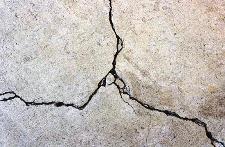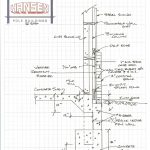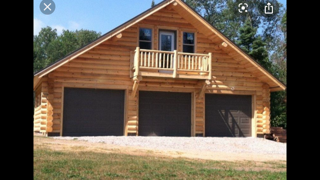When I was a general contractor constructing pole buildings, we provided a fair number of concrete slabs in buildings. We always guaranteed one thing – the floor will crack!
Not the answer people wanted to hear, but it was the truth.
Concrete may be the longest lasting and most economical building material of all time. When placed properly and in the right application it will last a long, long time. In 1997 I traveled to the Rotary International Convention in Glasgow, Scotland. Having never been to the British Isles before, we made the trip into a three week tour. One of the stops was at Bath, where we walked on concrete roadways built by the Romans! Now this is longevity.
However, nothing good lasts forever and concrete is no exception. It will crack; it is just a matter of when. Look at any flat concrete surface – it has cracks.
Some of those cracks appeared within hours of pouring. Others took many years to develop. One might believe technology is such to allow concrete to be made which will not crack.
 The answer is seriously complicated.
The answer is seriously complicated.
Cracks fall into one or more of several categories. These are plastic shrinkage, settlement, drying shrinkage, chemical, corrosion and overload. By knowing what causes cracks the severity can be reduced, if not avoided.
Plastic shrinkage cracks occur when water evaporates too quickly from the surface. This causes the top of the slab to dry more quickly than the bottom and they pull each apart. This is more likely to happen when it is hot, windy or there is low humidity. To avoid this use proper curing procedures. The key is to keep the surface moist. This can be done by placing wet burlap, mats or towels on the concrete. Place a sprinkler on the mist setting and let it run. There are also chemicals which can be applied to slow down the water evaporation. The time to begin any of these processes is after the final trowel application and the concrete has stiffened to the point where a wet burlap bag would not leave an impression on the concrete. In very warm weather this may need to be continued for several days. It may seem silly to water new concrete the way one would new grass, but this is exactly what should be done. It is possible on cool, overcast days to not need to take any of these measures.
Settlement cracks occur when the ground under the concrete moves. This can be the result of poorly compacted soil, the wrong kind of soil (sand), water erosion or tree roots. Poorly compactable soil should be dug out and replaced with crushed stone before placing the concrete. Do not plant trees near concrete slabs, over time, the pressure from the tree roots will cause the slab to crack.
Drying shrinkage occurs when a slab which is restrained is drying and shrinking. This usually does not occur on what is called a “free floating slab”. It is more of a problem when a slab is tied into another structure like a wall with rebar.
There are two ways chemical reactions can crack concrete. The first is because the concrete itself contains aggregates or cements which are not compatible. This isn’t something to be overly concerned about, as local premix companies know which issues happen in their geographic area. In ice and snow country – DO NOT PUT SALT on a slab to melt it away, use sand for traction instead.
Corrosion occurs when concrete containing contains steel re-bar or steel wire mesh gets wet and comes in contact with oxygen. The only way this can happen is when small cracks develop in the concrete due to one of the reasons stated above and channel water into the crack. When water reaches the steel it begins to rust. Rust is expansive. As the steel rusts it pushes out and causes even more cracking. The prevention here is to make sure you treat all little cracks before they become big cracks. See my other blogs for fixing cracks.
Concrete is designed to take a certain load. Most sidewalks and residential driveways are designed to take the weight of a car or small truck. If backing up a loaded tandem axle dump truck or say a tank on a driveway, don’t be surprised if it cracks.
It is important to know the way the pros avoid at least some types of cracks. They use control joints. Control joints are an acknowledgment concrete will crack. The control joints can help to eliminate cracks or channel where the cracks will appear. Notice how sidewalks or driveways have either dividers essentially making several slabs out of one big slab or cuts running through every three or four feet? These are control joints.
Accept the inevitable, cracks happen – and take the appropriate steps to minimize or prevent them when you can.









